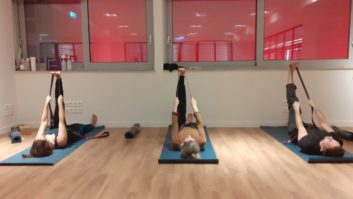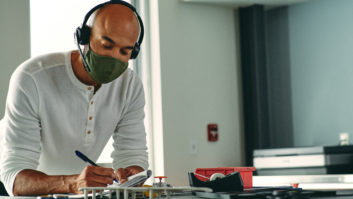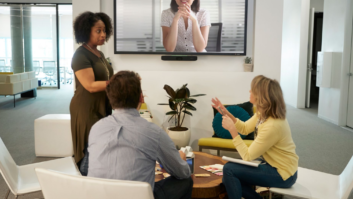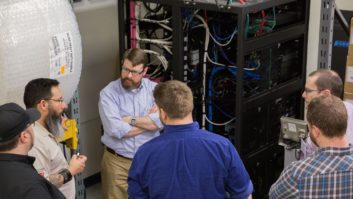 More than ever office-based workers are prioritising having their personal needs being met by their employer, from flexible hours to being provided with a quality home working set.
More than ever office-based workers are prioritising having their personal needs being met by their employer, from flexible hours to being provided with a quality home working set.
They are also quick to look elsewhere when these needs aren’t being met. In fact, more than a third of UK workers would quit their role if they were told to return to the office full time. With many companies advertising flexible and remote roles, there is a big risk of valuable talent moving on if these demands aren’t considered.
As well as HR and leadership teams getting the right policies in place, this also means that IT teams now need to put employee experience front and centre when considering tech investments for the business. For IT teams looking to enhance employee experience both in the office and at home, there are three key areas to consider when it comes to sourcing the right technology.
SEAMLESS INTEGRATION
One of the most important factors for IT teams to consider is if technology is easy for employees to use, and that it integrates seamlessly into their workday.
This is particularly relevant for any hybrid collaboration tools, like video conferencing systems for meeting rooms. If these systems are difficult to use, employees are unlikely to embrace them, impacting the effectiveness of hybrid working. Remote employees may feel excluded from meetings if dialling into systems from the office is complicated or if full video features can’t be enabled, and productivity will be compromised if booking and accessing meeting rooms isn’t seamless.
Devices that are compatible with major software platforms, that can be wirelessly connected, and allow for scheduling or joining meetings with one touch, are all key to ensuring the technology is maximised and employees feel that the hybrid work setups they demand are working effectively.
Systems that allow employees to easily book or amend desk and meeting spaces, from home or ad-hoc on the day, can also break down any barriers to coming to the office, making it a seamless and productive experience. Being able to see where teammates are working, and book shared desks at the touch of a button also ensure it’s always possible to collaborate in the office – even when a meeting wasn’t planned.
EQUITABLE EXPERIENCE
Every employee within an organisation should feel that they are an equal contributor to meetings and to the business as a whole, regardless of where they are. As hybrid working has matured, employees now expect to be able to join meetings from anywhere and feel they have an equal seat at the table – and be seen and heard clearly.
Newer technologies, such as on-table cameras and white board cameras, are able to help minimise the gap between in person and remote participants. With an on-table camera working together with a front-of-room system, it’s possible to easily pan and zoom to focus on whoever is speaking, giving those at home a clear view of their facial expressions as if they were in the room.
Whiteboard cameras are also a worthwhile investment. While whiteboards are useful collaboration tools, they aren’t practical in a hybrid meeting set up as remote employees can’t contribute and usually struggle to see the content. Whiteboard cameras can overcome these issues by streaming the content straight into a virtual meeting, providing remote participants a view of the board that is just as clear as if they were in the room.
HOME WORKING
If a workplace offers hybrid and flexible work options, IT teams also need to ensure employees are equipped with the right home working setups to work productively outside of the office.
One important factor is keeping a home desk tidy and organised – not strewn with cables. Tech that removes cables and simplifies desktop space is a great option, and investing in wireless mice, keyboards and headsets can also help employees to minimise clutter and work productively.
Another challenge employees can face when working at home is potential distractions, which can lead to lower productivity or tuning out during meetings. However, there are increasingly affordable headsets and webcams coming to market to help keep remote participants focused and looking their best.
Background noise and poor video are the two major issues these technologies needs to overcome, as 89% of remote workers also report video issues, and 85% also reporting audio issues. To stay focused in meetings, noise cancelling headsets are an essential part of the remote working toolkit. Camera quality and bad lighting are also aspects of home-working that cause issues, so equipping employees with webcams that automatically optimise lighting while providing HD video is an efficient and low-cost way to boost focus and confidence in meetings, making participants feel more able to get involved and provide useful contributions.
HYBRID FUTURES
Hybrid and remote working are set to stay, and ways of delivering these policies are becoming more advanced as businesses acclimatise to the new model.
But with this comes greater demands from employers, and new considerations for how technology needs to perform in the workplace.
Employers have a really important role to play here when it comes to investing in technology. Everything from video conferencing systems for large boardrooms through to mice and keyboards will ensure that employees are able to work as flexibly as they demand, without compromising on productivity and collaboration.







